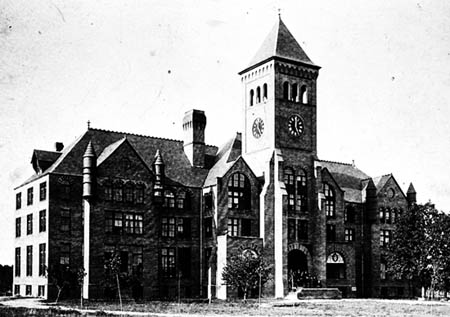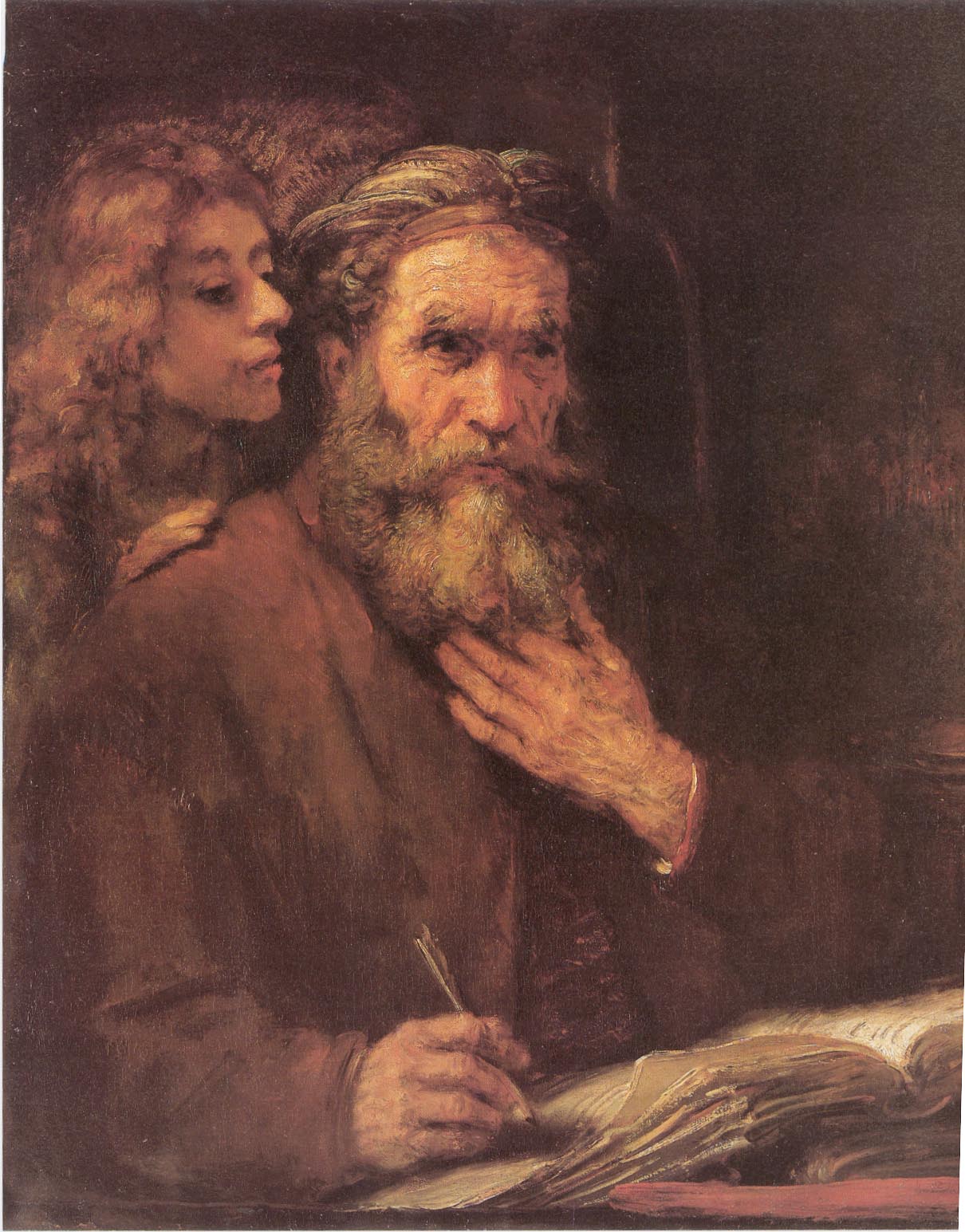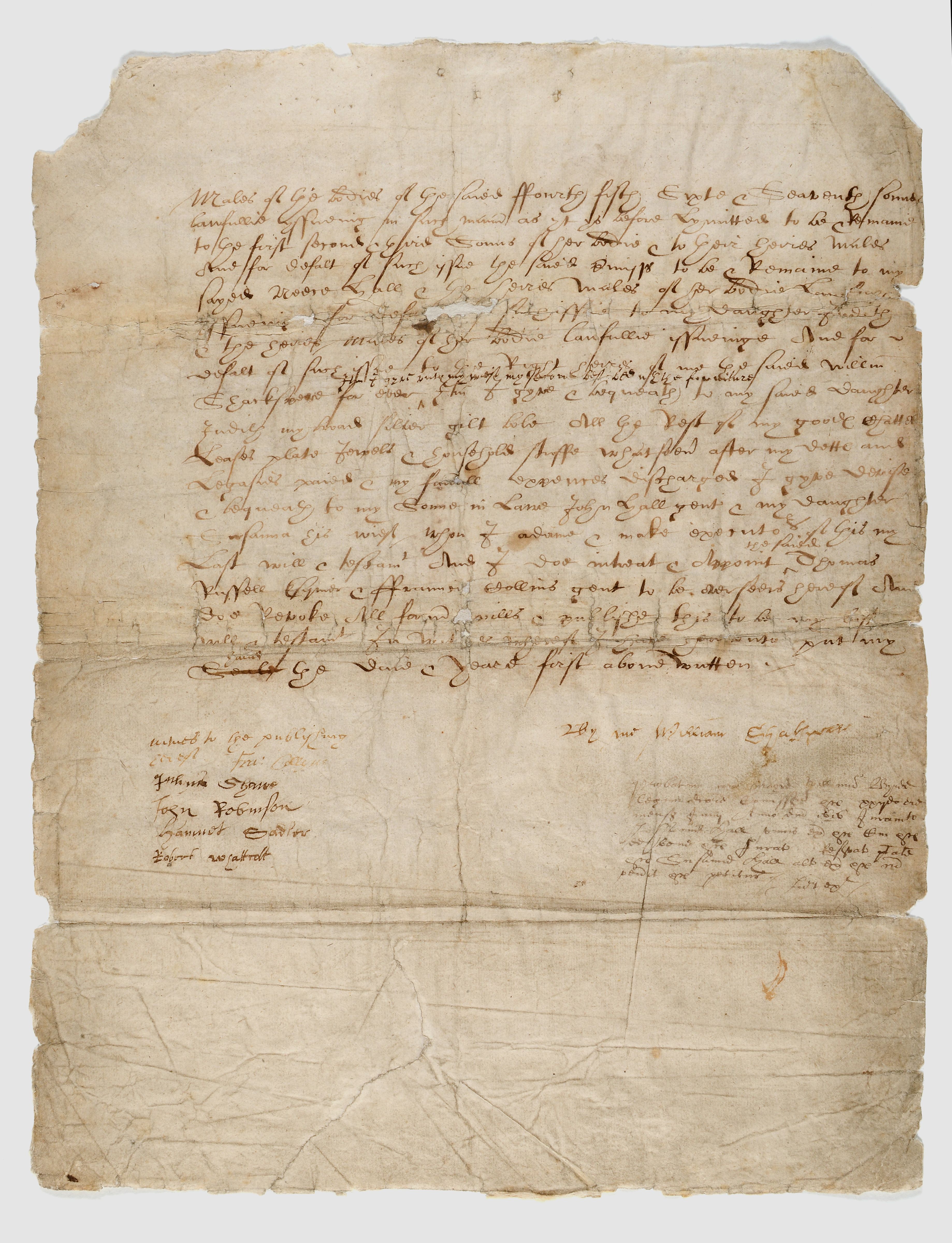|
Lectionary 2144
Lectionary 2144 designated by sigla ℓ ''2144'' (in the Biblical manuscript#Gregory–Aland, Gregory-Aland numbering), is a Greek Lower case, minuscule manuscript of the New Testament, written on 5 parchment leaves (22.5 cm by 15.3 cm). Paleography, Paleographically it has been assigned to the 12th or 13th century. Description The codex contains Lessons from the four Gospels lectionary (''Evangelistarium''). It is written in two columns per page, in 28 lines per page. History The codex once belonged to Kenneth Willis Clark. Currently it is located in the Kenneth Willis Clark Collection of the Duke University (Gk MS 27) at Durham, North Carolina, Durham. See also * List of New Testament lectionaries * Biblical manuscript * Textual criticism References External links Lectionary 2144 at the ''Kenneth Willis Clark Collection of Greek Manuscripts'' {{DEFAULTSORT:Lectionary 2144 Greek New Testament lectionaries 12th-century biblical manuscripts Duke Univ ... [...More Info...] [...Related Items...] OR: [Wikipedia] [Google] [Baidu] |
Greek Language
Greek ( el, label= Modern Greek, Ελληνικά, Elliniká, ; grc, Ἑλληνική, Hellēnikḗ) is an independent branch of the Indo-European family of languages, native to Greece, Cyprus, southern Italy (Calabria and Salento), southern Albania, and other regions of the Balkans, the Black Sea coast, Asia Minor, and the Eastern Mediterranean. It has the longest documented history of any Indo-European language, spanning at least 3,400 years of written records. Its writing system is the Greek alphabet, which has been used for approximately 2,800 years; previously, Greek was recorded in writing systems such as Linear B and the Cypriot syllabary. The alphabet arose from the Phoenician script and was in turn the basis of the Latin, Cyrillic, Armenian, Coptic, Gothic, and many other writing systems. The Greek language holds a very important place in the history of the Western world. Beginning with the epics of Homer, ancient Greek literature includes many works of l ... [...More Info...] [...Related Items...] OR: [Wikipedia] [Google] [Baidu] |
Duke University
Duke University is a private research university in Durham, North Carolina. Founded by Methodists and Quakers in the present-day city of Trinity in 1838, the school moved to Durham in 1892. In 1924, tobacco and electric power industrialist James Buchanan Duke established The Duke Endowment and the institution changed its name to honor his deceased father, Washington Duke. The campus spans over on three contiguous sub-campuses in Durham, and a marine lab in Beaufort. The West Campus—designed largely by architect Julian Abele, an African American architect who graduated first in his class at the University of Pennsylvania School of Design—incorporates Gothic architecture with the Duke Chapel at the campus' center and highest point of elevation, is adjacent to the Medical Center. East Campus, away, home to all first-years, contains Georgian-style architecture. The university administers two concurrent schools in Asia, Duke-NUS Medical School in Singapore (e ... [...More Info...] [...Related Items...] OR: [Wikipedia] [Google] [Baidu] |
Biblical Manuscript
A biblical manuscript is any handwritten copy of a portion of the text of the Bible. Biblical manuscripts vary in size from tiny scrolls containing individual verses of the Jewish scriptures (see '' Tefillin'') to huge polyglot codices (multi-lingual books) containing both the Hebrew Bible (Tanakh) and the New Testament, as well as extracanonical works. The study of biblical manuscripts is important because handwritten copies of books can contain errors. Textual criticism attempts to reconstruct the original text of books, especially those published prior to the invention of the printing press. Hebrew Bible (or Tanakh) manuscripts The Aleppo Codex (c. 920 CE) and Leningrad Codex (c. 1008 CE) were once the oldest known manuscripts of the Tanakh in Hebrew. In 1947, the finding of the Dead Sea scrolls at Qumran pushed the manuscript history of the Tanakh back a millennium from such codices. Before this discovery, the earliest extant manuscripts of the Old Testament were ... [...More Info...] [...Related Items...] OR: [Wikipedia] [Google] [Baidu] |
Lower Case
Letter case is the distinction between the letters that are in larger uppercase or capitals (or more formally ''majuscule'') and smaller lowercase (or more formally ''minuscule'') in the written representation of certain languages. The writing systems that distinguish between the upper and lowercase have two parallel sets of letters, with each letter in one set usually having an equivalent in the other set. The two case variants are alternative representations of the same letter: they have the same name and pronunciation and are treated identically when sorting in alphabetical order. Letter case is generally applied in a mixed-case fashion, with both upper and lowercase letters appearing in a given piece of text for legibility. The choice of case is often prescribed by the grammar of a language or by the conventions of a particular discipline. In orthography, the uppercase is primarily reserved for special purposes, such as the first letter of a sentence or of a proper noun ... [...More Info...] [...Related Items...] OR: [Wikipedia] [Google] [Baidu] |
Manuscript
A manuscript (abbreviated MS for singular and MSS for plural) was, traditionally, any document written by hand – or, once practical typewriters became available, typewritten – as opposed to mechanically printed or reproduced in some indirect or automated way. More recently, the term has come to be understood to further include ''any'' written, typed, or word-processed copy of an author's work, as distinguished from the rendition as a printed version of the same. Before the arrival of printing, all documents and books were manuscripts. Manuscripts are not defined by their contents, which may combine writing with mathematical calculations, maps, music notation, explanatory figures, or illustrations. Terminology The study of the writing in surviving manuscripts, the "hand", is termed palaeography (or paleography). The traditional abbreviations are MS for manuscript and MSS for manuscripts, while the forms MS., ms or ms. for singular, and MSS., mss or mss. f ... [...More Info...] [...Related Items...] OR: [Wikipedia] [Google] [Baidu] |
New Testament
The New Testament grc, Ἡ Καινὴ Διαθήκη, transl. ; la, Novum Testamentum. (NT) is the second division of the Christian biblical canon. It discusses the teachings and person of Jesus, as well as events in first-century Christianity. The New Testament's background, the first division of the Christian Bible, is called the Old Testament, which is based primarily upon the Hebrew Bible; together they are regarded as sacred scripture by Christians. The New Testament is a collection of Christian texts originally written in the Koine Greek language, at different times by various authors. While the Old Testament canon varies somewhat between different Christian denominations, the 27-book canon of the New Testament has been almost universally recognized within Christianity since at least Late Antiquity. Thus, in almost all Christian traditions today, the New Testament consists of 27 books: * 4 canonical gospels ( Matthew, Mark, Luke, and John) * The Acts of the ... [...More Info...] [...Related Items...] OR: [Wikipedia] [Google] [Baidu] |
Paleography
Palaeography ( UK) or paleography ( US; ultimately from grc-gre, , ''palaiós'', "old", and , ''gráphein'', "to write") is the study of historic writing systems and the deciphering and dating of historical manuscripts, including the analysis of historic handwriting. It is concerned with the forms and processes of writing; not the textual content of documents. Included in the discipline is the practice of deciphering, reading, and dating manuscripts, and the cultural context of writing, including the methods with which writing and books were produced, and the history of scriptoria. The discipline is one of the auxiliary sciences of history. It is important for understanding, authenticating, and dating historic texts. However, it generally cannot be used to pinpoint dates with high precision. Application Palaeography can be an essential skill for historians and philologists, as it tackles two main difficulties. First, since the style of a single alphabet in each given lan ... [...More Info...] [...Related Items...] OR: [Wikipedia] [Google] [Baidu] |
Walter De Gruyter
Walter de Gruyter GmbH, known as De Gruyter (), is a German scholarly publishing house specializing in academic literature. History The roots of the company go back to 1749 when Frederick the Great granted the Königliche Realschule in Berlin the royal privilege to open a bookstore and "to publish good and useful books". In 1800, the store was taken over by Georg Reimer (1776–1842), operating as the ''Reimer'sche Buchhandlung'' from 1817, while the school’s press eventually became the ''Georg Reimer Verlag''. From 1816, Reimer used the representative Sacken'sche Palace on Berlin's Wilhelmstraße for his family and the publishing house, whereby the wings contained his print shop and press. The building became a meeting point for Berlin salon life and later served as the official residence of the president of Germany. Born in Ruhrort in 1862, Walter de Gruyter took a position with Reimer Verlag in 1894. By 1897, at the age of 35, he had become sole proprietor of th ... [...More Info...] [...Related Items...] OR: [Wikipedia] [Google] [Baidu] |
Lectionary
A lectionary ( la, lectionarium) is a book or listing that contains a collection of scripture readings appointed for Christian or Judaic worship on a given day or occasion. There are sub-types such as a "gospel lectionary" or evangeliary, and an epistolary with the readings from the New Testament Epistles. History The Talmud claims that the practice of reading appointed Scriptures on given days or occasions dates back to the time of Moses and began with the annual religious festivals of Passover, Pentecost, and the Feast of Tabernacles (Talmud, ''Megilah 32a''). The Mishnah portion of the Talmud, probably finished in the early 3rd century AD/CE (''Anno'' ''Domini'' or Common Era) contains a list of Torah readings for various occasions (Talmud, ''Megilah 32a'') and assumes that these special readings interrupt a regular schedule of Torah readings (Talmud, ''Megilah 29a, 30b''). In addition to these Torah readings, the later Gemara portion of the Talmud also contains assigned annu ... [...More Info...] [...Related Items...] OR: [Wikipedia] [Google] [Baidu] |
Kenneth Willis Clark
Kenneth Willis Clark (1898–1979) was a professor at Duke University, Greek palaeographer; area of interest: Greek New Testament manuscripts, and author of numerous books. Clark catalogued the Greek New Testament manuscripts housed in the libraries of the United States and Canada (1937).T.C. Skeat''A descriptive Catalogue of Greek New Testament Manuscripts in America. By K.W. Clark'' „The Journal of Hellenic Studies”, Volume 59, Issue 1, 1939, p. 179. Clark described and catalogued manuscripts housed in the library of the Saint Catherine's Monastery during his an expedition the Mount Sinai (1952). According to his report two-thirds of that library comprised Greek manuscripts with items in Arabic, Persian, Georgian, Syriac, Ethiopian and Slavonic.Jason Steinhauer''EU Month of Culture Spotlight: Bulgaria''May 2, 2016 He also catalogued the manuscripts housed in the libraries of the Greek and Armenian Patriarchates in Jerusalem (1953). Works * ''Codex 2401 - the Theophanes pra ... [...More Info...] [...Related Items...] OR: [Wikipedia] [Google] [Baidu] |
Kenneth Willis Clark Collection
The Kenneth Willis Clark Collection of Greek Manuscripts in the David M. Rubenstein Rare Book & Manuscript Library, Duke University contains over one hundred manuscripts — in both roll and codex form — dating from the 9th to the 17th century. The collection as a whole is named in his honor and includes manuscripts collected and donated by Kenneth Clark as well as manuscripts acquired from other sources. Description Professor Harvie Branscomb of the Duke Divinity School bought a manuscript of the Greek New Testament in a Munich bookshop. The manuscript after its arrival at the Library became ''Duke Greek Ms. 1''. This was on 19 February 1931, and it was the beginning of the collection. Although the initial intention was only to collect manuscripts of the New Testament, today the collection contains a variety of materials. [...More Info...] [...Related Items...] OR: [Wikipedia] [Google] [Baidu] |
Durham, North Carolina
Durham ( ) is a city in the U.S. state of North Carolina and the county seat of Durham County. Small portions of the city limits extend into Orange County and Wake County. With a population of 283,506 in the 2020 Census, Durham is the 4th-most populous city in North Carolina, and the 74th-most populous city in the United States. The city is located in the east-central part of the Piedmont region along the Eno River. Durham is the core of the four-county Durham-Chapel Hill Metropolitan Area, which has a population of 649,903 as of 2020 U.S. Census. The Office of Management and Budget also includes Durham as a part of the Raleigh-Durham-Cary Combined Statistical Area, commonly known as the Research Triangle, which has a population of 2,043,867 as of 2020 U.S. census. A railway depot was established in 1849 on land donated by Bartlett S. Durham, the namesake of the city. Following the American Civil War, the community of Durham Station expanded rapidly, in part due ... [...More Info...] [...Related Items...] OR: [Wikipedia] [Google] [Baidu] |


.jpg)





